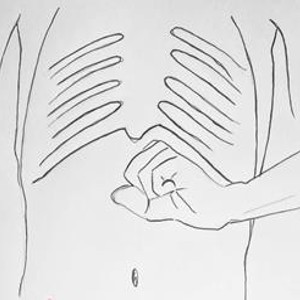Risk factors and prevention of choking

Accepted: 25 September 2023
HTML: 5
All claims expressed in this article are solely those of the authors and do not necessarily represent those of their affiliated organizations, or those of the publisher, the editors and the reviewers. Any product that may be evaluated in this article or claim that may be made by its manufacturer is not guaranteed or endorsed by the publisher.
Simpson E. How to manage a choking adult. Nurs Stand. 2016 Sep 14;31(3):42-46. PMID: 27745052. DOI: https://doi.org/10.7748/ns.2016.e10542
Cyr C; Canadian Paediatric Society, Injury Prevention Committee. Preventing choking and suffocation in children. Paediatr Child Health. 2012 Feb;17(2):91-4. PMID: 23372401; PMCID: PMC3299355. DOI: https://doi.org/10.1093/pch/17.2.91
Friedman ML, Nitu ME. Acute Respiratory Failure in Children. Pediatr Ann. 2018 Jul 1;47(7):e268-e273. PMID: 30001440. DOI: https://doi.org/10.3928/19382359-20180625-01
Wu WS, Sung KC, Cheng TJ, Lu TH. Associations between chronic diseases and choking deaths among older adults in the USA: a cross-sectional study using multiple cause mortality data from 2009 to 2013. BMJ Open. 2015 Nov 12;5(11):e009464.. PMID: 26563213; PMCID: PMC4654350. DOI: https://doi.org/10.1136/bmjopen-2015-009464
Dolkas L, Stanley C, Smith AM, Vilke GM. Deaths associated with choking in San Diego county. J Forensic Sci. 2007 Jan;52(1):176-9. PMID: 17209932. DOI: https://doi.org/10.1111/j.1556-4029.2006.00297.x
Montana A, Salerno M, Feola A, Asmundo A, Di Nunno N, Casella F, Manno E, Colosimo F, Serra R, Di Mizio G. Risk Management and Recommendations for the Prevention of Fatal Foreign Body Aspiration: Four Cases Aged 1.5 to 3 Years and Mini-Review of the Literature. Int J Environ Res Public Health. 2020 Jun 30;17(13):4700. PMID: 32629891; PMCID: PMC7369691. DOI: https://doi.org/10.3390/ijerph17134700
Matsubayashi T, Ueda M. Suicides and accidents on birthdays: Evidence from Japan. Soc Sci Med. 2016 Jun;159:61-72. Epub 2016 Apr 29. PMID: 27173742. DOI: https://doi.org/10.1016/j.socscimed.2016.04.034
Kiyohara K, Sakai T, Nishiyama C, Nishiuchi T, Hayashi Y, Iwami T, Kitamura T. Epidemiology of Out-of-Hospital Cardiac Arrest Due to Suffocation Focusing on Suffocation Due to Japanese Rice Cake: A Population-Based Observational Study From the Utstein Osaka Project. J Epidemiol. 2018 Feb 5;28(2):67-74. Epub 2017 Oct 28. PMID: 29093354; PMCID: PMC5792229. DOI: https://doi.org/10.2188/jea.JE20160179
Lluna J, Olabarri M, Domènech A, Rubio B, Yagüe F, Benítez MT, Esparza MJ, Mintegi S; en representación del Comité de Seguridad y Prevención de Lesiones No Intencionadas en la Infancia de la Asociación Española de Pediatría. Recomendaciones sobre la prevención de aspiraciones de cuerpos extraños [Recommendations for the prevention of foreign body aspiration]. An Pediatr (Barc). 2017 Jan;86(1):50.e1-50.e6. Spanish. Epub 2016 May 24. PMID: 27234822. DOI: https://doi.org/10.1016/j.anpedi.2016.04.013
American Academy of Pediatrics Committee on Child Health Financing. Medicaid policy statement. Pediatrics. 2005 Jul;116(1):274-80. Epub 2005 May 16. PMID: 15897340. DOI: https://doi.org/10.1542/peds.2005-0891
Levrini L, Bocchieri S, Mauceri F, Saran S, Carganico A, Zecca PA, Segù M. Chewing Efficiency Test in Subjects with Clear Aligners. Dent J (Basel). 2023 Mar 1;11(3):68. PMID: 36975565; PMCID: PMC10047352. DOI: https://doi.org/10.3390/dj11030068
Sahin A, Meteroglu F, Eren S, Celik Y. Inhalation of foreign bodies in children: experience of 22 years. J Trauma Acute Care Surg. 2013 Feb;74(2):658-63. PMID: 23354266. DOI: https://doi.org/10.1097/TA.0b013e3182789520
Saccomanno S, Saran S, De Luca M, Fioretti P, Gallusi G. Prevention of malocclusion and the importance of early diagnosis in the Italian young population. Eur J Paediatr Dent. 2022 Sep;23(3):178-182. PMID: 36172913.
van der Bilt A, Engelen L, Pereira LJ, van der Glas HW, Abbink JH. Oral physiology and mastication. Physiol Behav. 2006 Aug 30;89(1):22-7.. Epub 2006 Mar 29. PMID: 16564557. DOI: https://doi.org/10.1016/j.physbeh.2006.01.025
Boyd KL, Saccomanno S, Coceani Paskay Hv L, Quinzi V, Marzo G. Maldevelopment of the cranio-facial-respiratory complex: A Darwinian perspective. Eur J Paediatr Dent. 2021 Sep;22(3):225-229. PMID: 34544252.
Gelb M, Montrose J, Paglia L, Saccomanno S, Quinzi V, Marzo G. Myofunctional therapy Part 2: Prevention of dentofacial disorders. Eur J Paediatr Dent. 2021 Jun;22(2):163-167. PMID: 34238010.
Kohyama K, Mioche L, Bourdiol P. Influence of age and dental status on chewing behaviour studied by EMG recordings during consumption of various food samples. Gerodontology. 2003 Jul;20(1):15-23. PMID: 12926747. DOI: https://doi.org/10.1111/j.1741-2358.2003.00015.x
Xie Q, Ding T, Yang G. Rehabilitation of oral function with removable dentures--still an option? J Oral Rehabil. 2015 Mar;42(3):234-42. Epub 2014 Oct 18. PMID: 25327636. DOI: https://doi.org/10.1111/joor.12246
Köse A, Kostak D, Aramagan E, Durak A, Seçkin NS, Dönmez SS, Melek H. Tracheobronchial foreign body aspiration: dental prosthesis. Case Rep Pulmonol. 2014;2014:465856. Epub 2014 Aug 4. PMID: 25165606; PMCID: PMC4137749. DOI: https://doi.org/10.1155/2014/465856
Sidell DR, Kim IA, Coker TR, Moreno C, Shapiro NL. Food choking hazards in children. Int J Pediatr Otorhinolaryngol. 2013 Dec;77(12):1940-6. Epub 2013 Sep 12. PMID: 24113156. DOI: https://doi.org/10.1016/j.ijporl.2013.09.005
Chik KK, Miu TY, Chan CW. Foreign body aspiration in Hong Kong Chinese children. Hong Kong Med J. 2009 Feb;15(1):6-11. PMID: 19197090.
Saitoh E, Shibata S, Matsuo K, Baba M, Fujii W, Palmer JB. Chewing and food consistency: effects on bolus transport and swallow initiation. Dysphagia. 2007 Apr;22(2):100-7. Epub 2007 Feb 14. PMID: 17347905. DOI: https://doi.org/10.1007/s00455-006-9060-5
Prinz JF, Lucas PW. An optimization model for mastication and swallowing in mammals. Proc Biol Sci. 1997 Dec 22;264(1389):1715-21. PMID: 9447729; PMCID: PMC1688744. DOI: https://doi.org/10.1098/rspb.1997.0238
IDHS Illinois Department of Human Services. JB Pritzker, Governor, Grace B. Hou, Secretary. https://www.dhs.state.il.us/page.aspx?item=73374
Copyright (c) 2023 the Author(s)

This work is licensed under a Creative Commons Attribution-NonCommercial 4.0 International License.
PAGEPress has chosen to apply the Creative Commons Attribution NonCommercial 4.0 International License (CC BY-NC 4.0) to all manuscripts to be published.


 https://doi.org/10.4081/ejtm.2023.11471
https://doi.org/10.4081/ejtm.2023.11471



